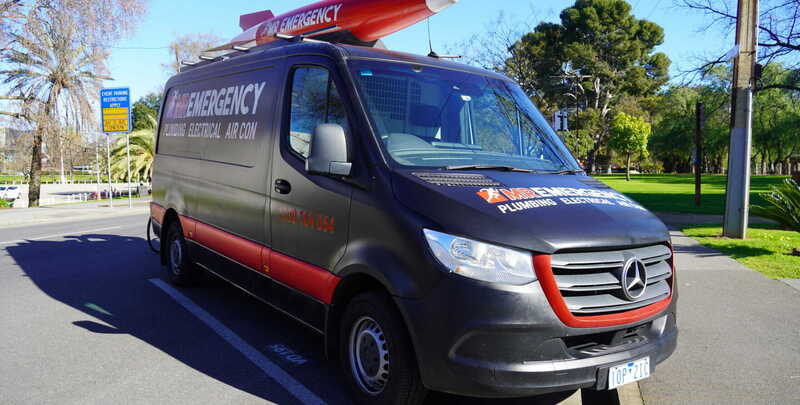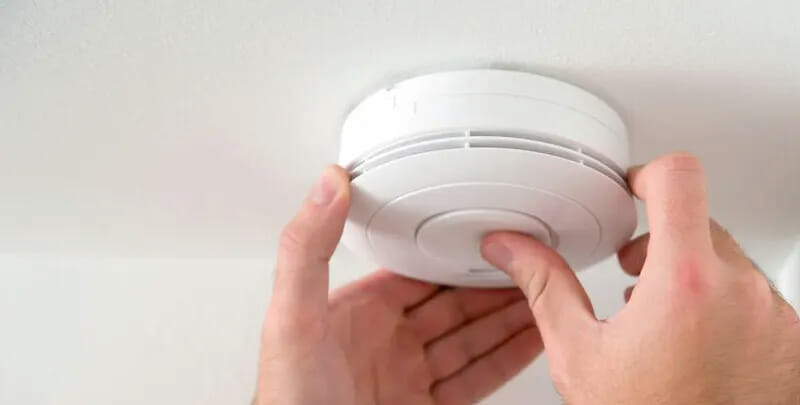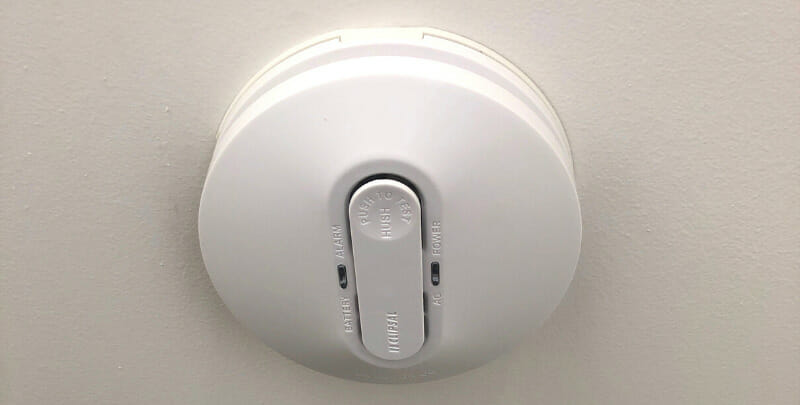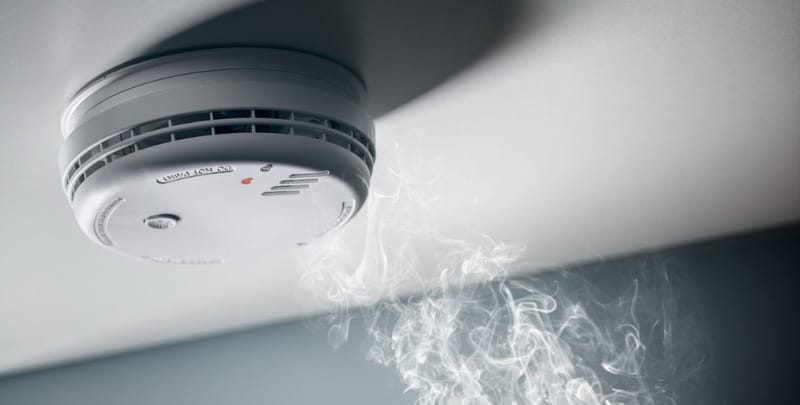
Smoke Alarms – Our Unsung Home Heroes
Smoke alarms are the unsung heroes of our homes, quietly standing guard to protect our lives and property around the clock.
But with so many types, features, and regulations, how do you know which smoke alarm is right for you?
Don’t worry. We’ve got your back. In this blog post, we’ll explore the world of smoke detectors, discussing everything from ionisation vs photoelectric alarms to installation, maintenance, and compliance with local laws.
By the time you finish reading, you’ll have a solid understanding of smoke alarms and the confidence to decide when choosing the perfect device for your home. So, let’s get started and unravel the mysteries of these life-saving gadgets.
The Importance of Smoke Alarms
Imagine waking up in the middle of the night to a piercing sound that saves you and your family from a potentially deadly situation. That’s the power of a working smoke alarm, essential for early fire detection in our homes. Standard smoke alarms are so crucial that they’re governed by Australian Standard 3786:2014.
According to emergency service statistics, many residential house fires result in severe injury or even death due to the absence of working smoke alarms. Installing a compliant smoke alarm in critical locations like bedrooms, hallways, and every floor of your property can make a world of difference regarding fire safety.
So, don’t underestimate the importance of these tiny devices – they can save lives and protect your home from devastating fire damage.
Types of Smoke Alarms: Ionisation vs Photoelectric
Types of smoke alarms are essential to understand. There are two main types: ionisation and photoelectric smoke alarms. Each type detects smoke particles differently, and understanding the pros and cons of each is crucial for making the right choice for your home.
Ionisation smoke alarms are more sensitive to flaming fires, while photoelectric smoke alarms excel at detecting smoky and smouldering fires. But how do these two smoke alarms work, and what sets them apart? Let’s explore these differences in detail.
Ionisation Smoke Alarms
Ionisation smoke alarms contain a small amount of radioactive material and effectively detect fast-flaming fires. An ionisation smoke alarm works by ionising the air, creating an electric field that senses charged smoke particles and triggers the alarm when necessary.
However, these alarms are not recommended for placement near kitchens or bathrooms, as they can be triggered by cooking fumes or steam, leading to nuisance alarms.
Fast-flaming fires produce little visible smoke, making ionisation alarms well-suited for detecting these types of fires. However, it’s important to remember that no single type of smoke alarm can cover all possible fire scenarios, so many experts recommend installing ionisation and photoelectric alarms for optimal protection.
Photoelectric Smoke Alarms
On the other hand, photoelectric smoke alarms use a sensor to detect light. The warning is triggered when smoke particles block the sensor’s ability to see the morning.
Photoelectric smoke alarms detect smouldering fires and thick smoke produced by foam-filled furnishings or overheated PVC wiring. Dust or insects entering the unit can also set them off.
Since photoelectric smoke alarms excel at detecting smoky and smouldering fires, they offer a valuable complement to ionisation alarms.
Many fire authorities recommend installing both alarms throughout your home to ensure comprehensive fire protection. By doing so, you’ll be better prepared for any fire scenario.

Interconnected Smoke Alarm Systems
Another essential aspect to consider is the interconnectivity of your smoke detectors.
Interconnected smoke alarm systems, whether hardwired or wireless, provide an added layer of protection by ensuring that when one alarm detects smoke, all the warnings in the system sound off simultaneously. This gives you more time to tackle the source of the fire or evacuate the premises safely.
The following sections delve deeper into hardwired and wireless interconnected alarm systems and discuss their advantages and installation processes.
Hard-Wired Interconnected Alarms
Hard-wired interconnected alarms are directly connected to your home’s power mains (240v) and can easily replace most existing hard-wired smoke detectors. They offer more excellent warnings as all alarms activate when one detects smoke, providing a quicker response time in case of a fire.
However, installing hardwired interconnected alarms requires professional installation and adherence to local regulations. To install hardwired interconnected photoelectric smoke alarms, disconnect existing hardwired detectors, connect the new ones to the power mains, and tie the red wires from all the warnings together.
While this process is relatively straightforward, following the manufacturer’s instructions and local building codes is crucial to ensure proper installation and compliance.
Wireless Interconnected Alarms
Wireless alarms, such as wireless interconnected smoke alarms, offer a more convenient alternative to hardwired systems. These alarms use radio frequencies to communicate with each other and can be easily installed without complex wiring. Clipsal, RED Smoke Alarms and PSA offer wireless bases compatible with interconnected smoke alarms.
The main advantage of wireless interconnected alarms is their ease of installation and connectivity. They provide the same level of protection as hardwired systems, alerting all linked devices when one alarm detects smoke. It ensures a timely response to potential fire hazards and helps keep your home and family safe.
Compliant Smoke Alarm Installation
Ensuring you install your smoke alarms correctly and compliantly is crucial for optimal performance and safety. Factors such as placement, testing, and maintenance play a significant role in the effectiveness of your smoke alarms.
This section discusses placement guidelines and maintenance tips to help you achieve compliant smoke alarm installation.
Smoke Alarm Placement Guidelines
Proper placement of smoke alarms is vital for early detection of fires. Depending on your location, the requirements for smoke alarm placement may vary. In general, there should a working smoke alarm installed on every level of your home, in each bedroom and in living areas is recommended.
Additionally, it’s important to avoid dead air spaces and ensure that smoke alarms are no more than 10 years old.
It’s best to refer to your area’s specific fire safety regulations for a complete set of guidelines, as requirements differ from state to state. By following these guidelines, you can maximise the effectiveness of your smoke alarms and ensure compliance with local laws and regulations.
Testing and Maintenance
Regular testing and maintenance are essential to keep your smoke alarms working efficiently. Test your smoke alarms monthly by pressing the test button on the device and replace the batteries at least once a year if they’re not the lithium 10-year battery type.
Additionally, replace the alarms every 10 years or as the manufacturer recommends.
By staying on top of testing and maintenance, you can ensure that your smoke alarms remain in optimal working condition, ready to alert you in the event of a fire. Investing time and effort in maintaining your smoke alarms can save lives and protect your property from fire damage.

Battery-Powered vs Mains-Powered Smoke Alarms
When choosing a smoke alarm, one of the critical decisions you’ll need to make is opting for a battery-powered or mains-powered device. Both types have advantages and drawbacks, so it’s essential to weigh your options carefully before deciding.
In the following sections, we’ll discuss the pros and cons of battery-powered and mains-powered smoke alarms to help you determine the best choice for your home.
Battery Powered Smoke Alarms
Battery-powered smoke alarms run on a battery rather than connected to your home’s electrical system, making them easy to install and replace. These alarms are particularly suitable for renters or people who move frequently, as they offer greater portability and flexibility regarding placement.
Most smoke alarms on the market today are battery-powered, catering to the needs of a wide range of users.
However, battery-powered alarms require regular battery replacement, and there’s always the risk of running out, potentially compromising the alarm’s effectiveness. Despite these drawbacks, battery-powered smoke alarms offer a convenient and reliable option for fire detection.
Mains-Powered Smoke Alarms
On the other hand, mains-powered smoke alarms are connected to your home’s electrical mains and typically include a backup battery in case of power failure. These alarms are more reliable than their battery-powered counterparts since they are directly connected to your home’s power supply.
Professional installation is required for mains-powered smoke alarms, and power outages may impact them. Despite these disadvantages, mains-powered notices provide continuous protection and ensure your home has a reliable fire detection system.
Smoke Alarm Laws and Regulations
Compliance with smoke alarm laws and regulations is not only a legal requirement but also a crucial factor in ensuring your home’s and its occupants’ safety.
Different regions have varying requirements for smoke alarm installation, so it’s essential to familiarise yourself with the regulations in your area. Failure to comply with these laws can result in penalties, such as infringement notices or prosecution.
In addition to understanding regional regulations, following the manufacturer’s instructions for installation, testing, and maintenance is essential. By adhering to these guidelines and local laws, you can ensure that your smoke alarms are compliant and effective in detecting and alerting you to potential fires.
Troubleshooting Common Smoke Alarm Issues
Smoke alarms are generally low-maintenance devices, but occasionally, you may encounter issues such as false alarms or beeping noises.
Low batteries are a common cause of beeping smoke alarms, even when no smoke or fire is nearby. Temperature fluctuations, such as cold nights or sudden changes in room temperature, can also trigger beeping, causing the battery voltage to drop below the desired working range.
To address these issues, replace the batteries regularly and keep the smoke alarm free from dust and insects. If false alarms persist, try relocating the smoke alarm away from air conditioning vents or ceiling fans, which can cause temperature fluctuations or drafts that trigger the alarm.
You can keep your smoke alarms functioning optimally by troubleshooting common issues and avoiding unnecessary disruptions.
Selecting the Right Smoke Alarm for Your Home
Choosing the right smoke alarm for your home involves considering factors such as the type of alarm (ionisation vs photoelectric), power source (battery-powered vs mains-powered), and interconnectivity options (hardwired or wireless).
It’s also essential to ensure that your smoke alarms comply with local laws and regulations and the manufacturer’s instructions for installation, testing, and maintenance.
By evaluating your options and weighing the pros and cons of each type of smoke alarm, you can make an informed decision that best suits your home and family’s needs.
With the right smoke alarm in place, you’ll have peace of mind knowing that your home is protected and prepared for any fire-related emergencies.

Select the Right Smoke Alarm
In conclusion, selecting the right smoke alarm for your home is a critical decision that can significantly impact your family’s safety. By understanding the differences between ionisation and photoelectric smoke alarms, considering interconnectivity options, and ensuring compliance with local laws and regulations.
You can make an informed choice that provides optimal fire detection and protection.
Don’t leave your family’s safety to chance. Invest in the right smoke alarm for your home and enjoy the peace of mind that comes with knowing you’re prepared for any fire-related emergencies.
Your home, belongings, and, most importantly, your loved ones deserve the best protection.
For more details, contact the smoke alarm specialists at Mr Emergency today.
Please note: This information is provided for advice purposes only. Regulations differ from state to state, so please consult your local authorities or an industry professional before proceeding with any work. See our Terms & Conditions here.


